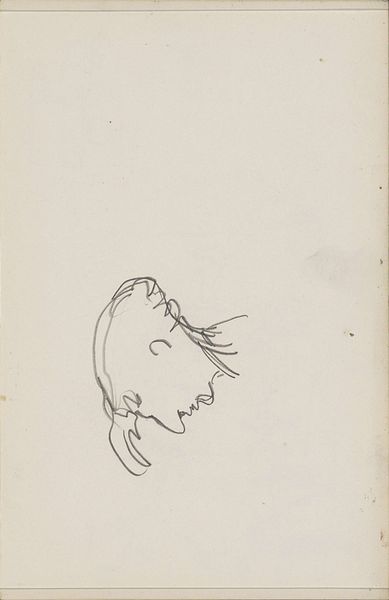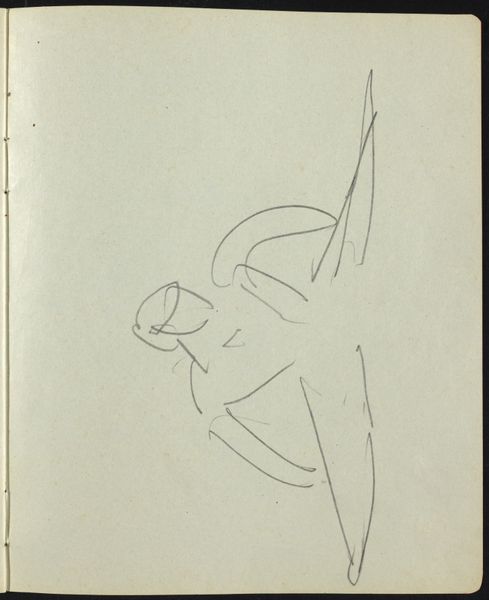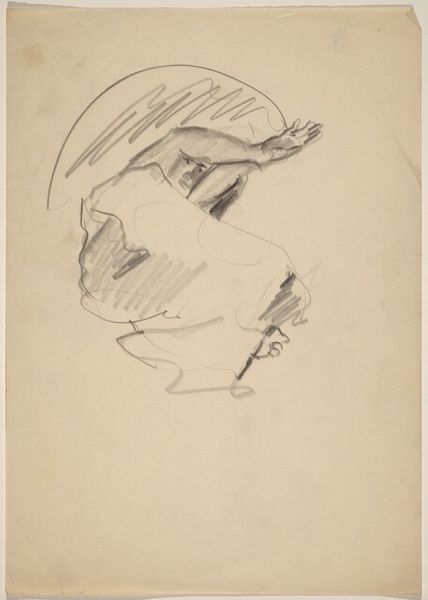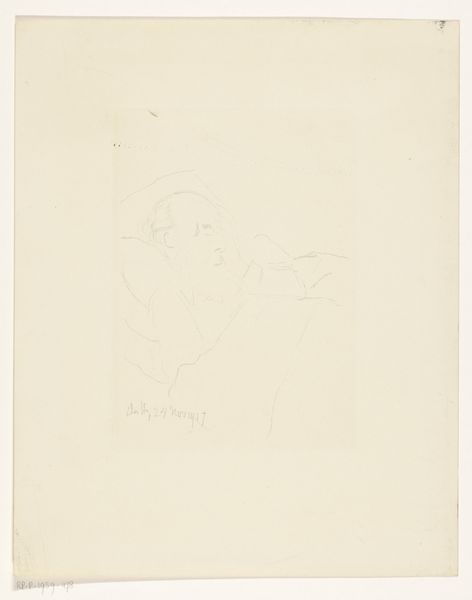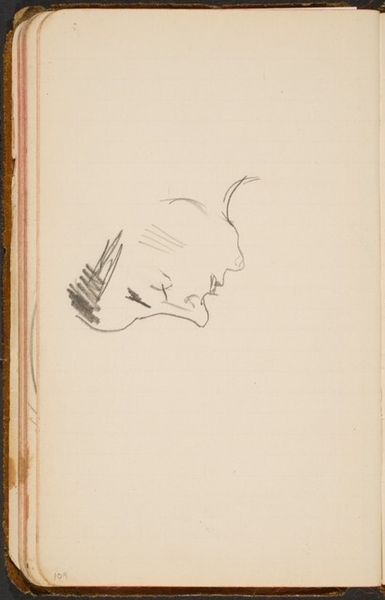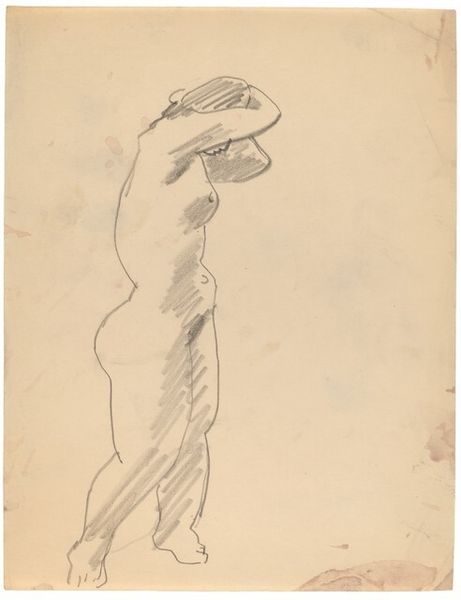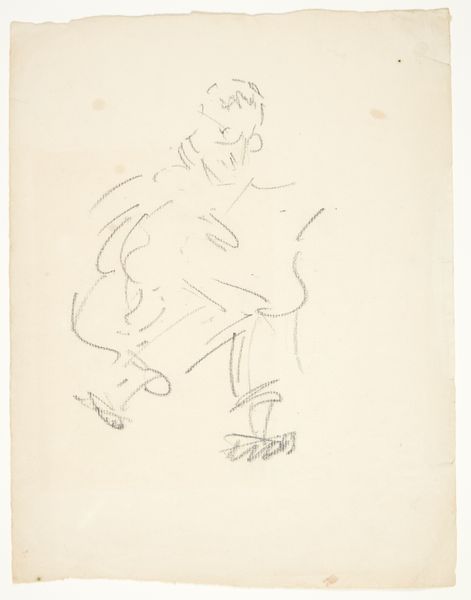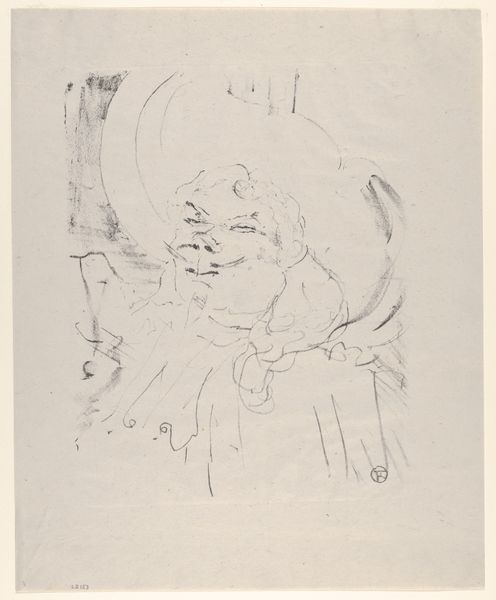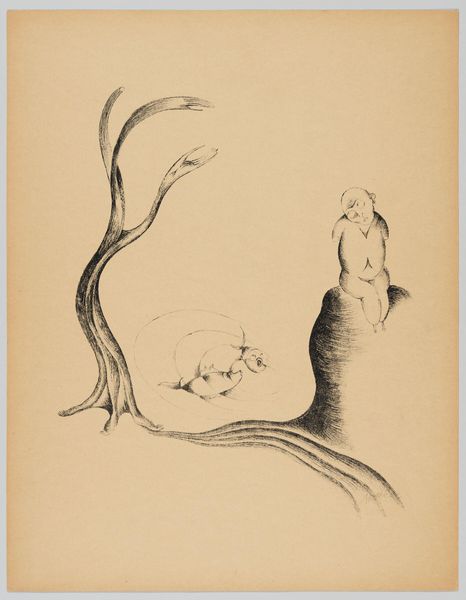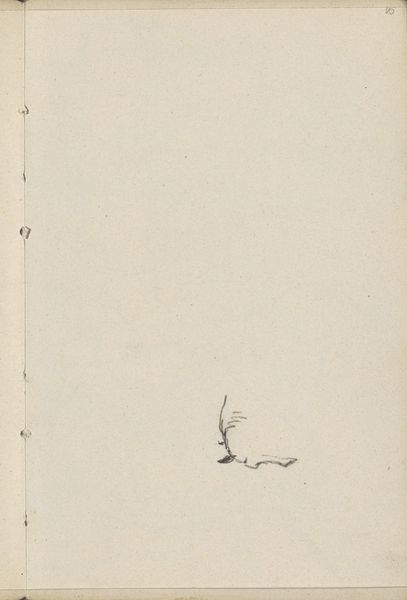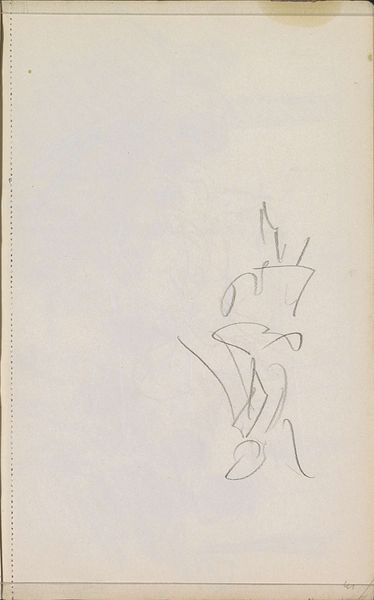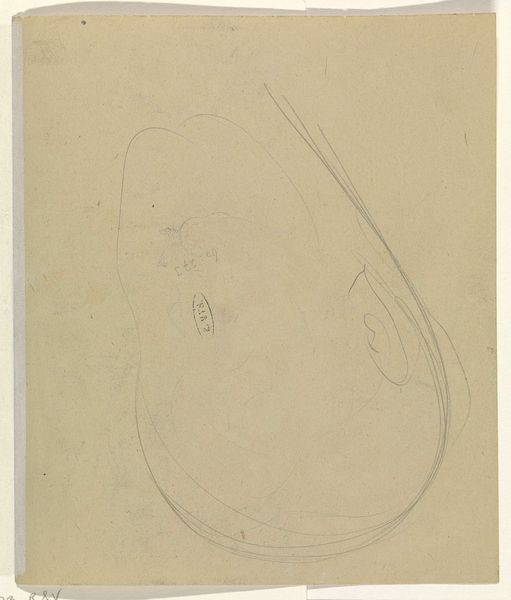
drawing, print, pencil
#
portrait
#
drawing
#
ink drawing
# print
#
figuration
#
pencil
#
symbolism
Dimensions: Sheet: 12 1/16 x 9 7/8 in. (30.6 x 25.1 cm) Image: 4 13/16 x 4 15/16 in. (12.3 x 12.5 cm)
Copyright: Public Domain
Curator: A floating figure, all delicate lines and hushed reverence, is what strikes me at first glance. Almost weightless. Editor: We're looking at Odilon Redon's "Sleep," created in 1898. It's a pencil and crayon drawing, showcasing Redon's signature symbolist style. It’s currently housed here at the Metropolitan Museum. Curator: Symbolism! It resonates, yes. The headscarf reminds me of a nun’s habit or a shroud… is it hinting at spiritual devotion, or perhaps the oblivion of death itself? Editor: Considering the period, we have to recognize how this artwork subverts typical portraiture. Women are so often positioned for the male gaze; here, the subject escapes visibility. Her closed eyes… she isn’t performing for anyone. Sleep as resistance, maybe? Curator: Escape. I love that idea. It does feel like an inner sanctum, a flight from the world's noise. The hatch marks framing her form almost give it the weight of tangible protection, right? Like a shadow protecting the innocence and tranquility that sleep holds. Editor: Shadows play a powerful role here. Remember, Redon was deeply engaged with the burgeoning field of psychoanalysis. "Sleep" reflects this, engaging themes of repression and the unconscious. The lines obscure and reveal, mirroring how we process our experiences. Is sleep then an allegory for coming to terms with trauma, maybe? Curator: Coming to terms...perhaps. Or perhaps it simply exists in defiance of everything that makes trauma unavoidable. A silent scream. An opportunity for the psyche to finally embrace and love itself after being exposed to whatever horror the outside world has subjected it to. Editor: So well said. Redon doesn't give us answers, he provides a space for our own projections, which opens doors to complex themes: the tension between public visibility and private introspection. A woman taking refuge in a dream, refusing objectification. It makes you consider how bodies become sites for resistance in everyday moments. Curator: Absolutely. And even on a purely visual plane, it's about finding refuge and beauty within the ethereal and insubstantial. Editor: That's the legacy of artwork like "Sleep". It can become so much more than art. The piece manages to encapsulate vulnerability while presenting quiet strength. Curator: Indeed. It nudges us to dive head-first into the dream space, which, for many of us, may offer more truth than real-world expectations.
Comments
No comments
Be the first to comment and join the conversation on the ultimate creative platform.

